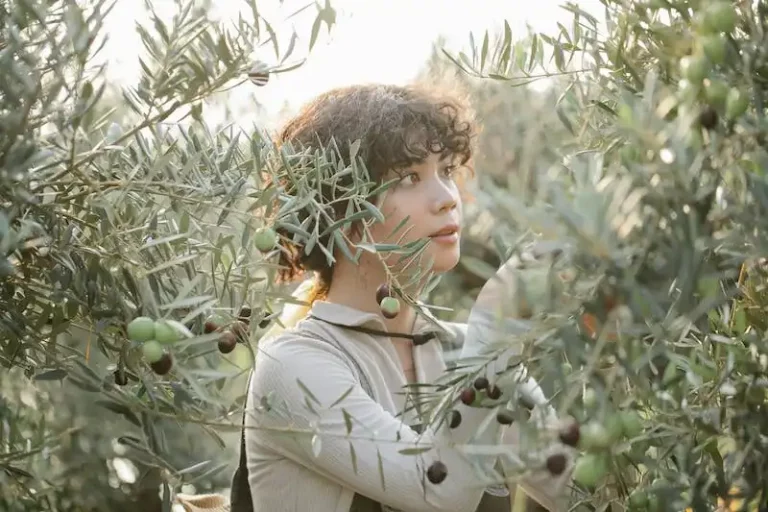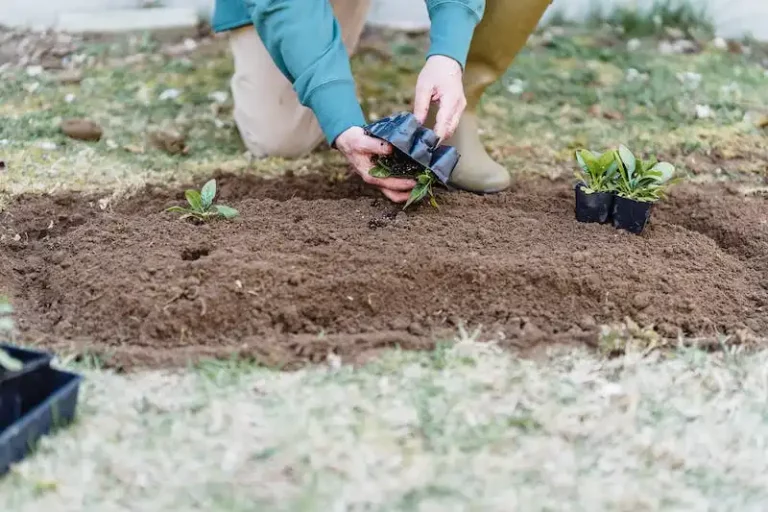Introduction: Harvesting leeks is a fundamental skill for every horticulturist or home gardener. Leeks are a commonly grown vegetable and are often used as a flavorful addition to soups, stews, and other dishes. Their long, cylindrical shape and mild onion flavor make them a favorite among home cooks and professional chefs alike.
When to harvest leeks: Leeks are typically harvested in the fall, but they can also be harvested earlier or later in the year depending on when they were planted. Leeks take a long time to mature, usually around 90-120 days from seed or 60-90 days from transplants. The ideal time to harvest leeks is when they have reached a desired size, usually around 1.5-2 inches in diameter.
How to harvest leeks: To harvest leeks, it is important to have a clean and well-organized workspace. Start by removing any debris or weeds from around the leek plants. Use a small hand trowel or garden fork to gently dig around the base of the leek, being careful not to damage the roots. With one hand, hold the leek near the base and use the other hand to gently lift and ease the leek out of the ground.
Post-harvest handling: After harvesting leeks, it is important to properly clean and store them to maintain their freshness and marketability. Start by removing any excess soil or debris from the leeks. Rinse them well under cold running water to remove any remaining dirt. Trim the roots and the tough outer leaves, leaving only the white and light green portion of the leek.
From Seed to Harvest: A Guide to Growing Leeks
Leeks, a member of the Allium family, are a popular vegetable to grow in many climates. Whether you live in Wisconsin or somewhere with a similar climate, growing leeks can be a rewarding experience.
Here are some tips on how to grow leeks:
- Begin with good quality leek seeds: Buy seeds from a trusted source or, alternatively, save seeds from your own leek plants.
- Prepare the soil: Leeks prefer well-drained soil, so if you have clay or heavy soil, adding compost or sand can help improve the drainage. Make sure the soil is loose and workable.
- Planting: Sow the seeds directly into the ground or start them indoors in pots. Leeks need a long growing season, so it’s best to start them indoors in late winter or early spring.
- Spacing: Plant leeks about 6 inches apart, with rows spaced 12-18 inches apart. Make sure the leek plants have enough room to grow.
- Watering: Leeks need regular watering, especially during dry periods. A consistent supply of moisture is crucial for their growth and development. Consider using drip irrigation or watering the plants at their base to keep their leaves dry and prevent diseases.
- Managing pests and diseases: Keep an eye out for common leek pests, such as onion flies or thrips. Use organic pest control methods whenever possible to avoid harmful chemicals.
- Frost protection: Leeks are quite hardy and can withstand frost. However, if you experience severe frosts, consider protecting your leeks with a layer of mulch or row covers to provide extra insulation.
Harvesting leeks:
- Timing: Leeks can be harvested throughout the growing season, but they taste best when harvested after a few frosts. The flavor becomes sweeter and more delicate.
- How to harvest: To harvest leeks, use a digging fork or a garden fork to carefully loosen the soil around the leek plants. Gently pull the leeks out of the ground, taking care not to damage the roots.
- Storing: Leeks can be stored in the fridge for several weeks. To store them longer, consider blanching and freezing them. Alternatively, you can store leeks in a cool and damp place like a root cellar or a garage, where they can last for months.
By following these guidelines, you can grow your own leeks and enjoy their delicious flavor in various dishes. From seed to harvest, leeks are a versatile vegetable that can enhance your culinary experience.
To plant
Leeks are typically grown from seed, which can be sown directly into the garden or started indoors and transplanted later. They are typically planted in the late summer or fall, about 8 to 10 weeks before the first frost. Leeks prefer well-drained soil with a pH between 6.0 and 7.0.
Before planting, prepare the soil by removing any weeds and adding organic matter, such as compost or well-rotted manure, to improve fertility and drainage. Leeks have a long growing season, so it’s important to start with healthy soil.
When planting leeks, make a trench that is about 6 inches deep, and space the plants about 6 to 8 inches apart. Place one-third of the plant below the soil level and gently fill in the trench around the plant with soil, taking care to not bury the whole plant. As the leeks grow, continue to fill in the trench to blanch the stems and create longer white sections.
Leeks are part of the allium family and are closely related to onions and garlic. They have a mild, onion-like flavor but are milder and sweeter than onions. There are many different varieties of leeks available, ranging in size from small to large.
Leeks can tolerate cooler temperatures and are often harvested after the first frost. The cold weather helps to sweeten the leeks, and they can be left in the ground until November in some climates.
Leeks are generally quite hardy and can withstand frosts and light freezes. However, they are susceptible to certain pests and diseases, including leek moths, onion maggots, and fungal diseases. To protect your leeks, practice good garden hygiene by removing any plant debris and rotating crops yearly to reduce the risk of pests and diseases.
Leeks require regular watering, especially during dry periods. They prefer moist soil, but be careful not to overwater. Watering directly to the base of the plant rather than overhead can help prevent diseases and improve plant health. Alternatively, you can mulch around the plants to help retain moisture.
Leeks are slow-growing plants, typically taking 100-180 days from seed to harvest. To ensure a good supply of leeks throughout the year, it’s a good idea to plant multiple successions, starting in early spring and continuing through midsummer.
When harvesting leeks, it’s best to wait until they reach a size of about 1 inch in diameter. The longer you wait, the more tender and flavorful they will be. To harvest, gently loosen the soil around the leek and pull it out of the ground. If you’re not using them right away, trim the roots and remove any damaged outer layers. Leeks can be stored in the refrigerator or in a cool, dark place for up to two weeks.
Leeks are a versatile and delicious vegetable that can be used in a variety of recipes. They add a unique flavor to soups, stews, and stir-fries, and can also be sautéed or roasted as a side dish. Leeks are a nutritious food, rich in vitamins A and K, as well as fiber. They are a great addition to your garden and can be enjoyed throughout the year.
To grow
Leeks are a common vegetable grown in many home gardens. They are a member of the allium family, along with onions and garlic. Leeks can be grown from seed or from seedlings purchased from a garden center or nursery. If starting from seed, it is best to start them indoors in early spring and transplant them outside when the weather warms up.
Leeks prefer a well-drained soil that is rich in organic matter. Before planting, amend the soil with compost or well-rotted manure to provide the nutrients that the plants will need. They require regular watering, especially during dry periods. However, it is important not to overwater, as this can lead to rotting of the plants.
Leeks are best planted in late spring or early summer, after the threat of frost has passed. They prefer a cool climate and will tolerate temperatures as low as 25 degrees Fahrenheit. Leeks take a long time to mature, usually around 100 days, so they should be planted with enough time to reach maturity before the first frost in the fall.
When planting leeks, make a hole in the soil that is deep enough to accommodate the length of the white stem. Place the seedling or seed in the hole and gently firm the soil around it. Space the plants about 6 inches apart to allow for proper growth.
Leeks can also be grown in a greenhouse or cold frame, which allows for earlier planting and a longer growing season. They can be started from seed in trays or pots and then transplanted outside when the weather is suitable.
Leeks are a low-maintenance crop, but they may be susceptible to certain pests and diseases. The most common problem is the leek moth, whose larvae feed on the leaves and can cause significant damage. Another common pest is the onion fly, which lays its eggs at the base of the plant and leads to maggots developing and feeding on the roots. To prevent these problems, practice good crop rotation and remove any infected plants promptly.
Leeks are ready to harvest when the stalks are about 1 inch in diameter and have reached their desired length. This is typically in late summer or early fall, about 90-120 days after planting. To harvest, gently loosen the soil around the base of the plant and carefully lift it out of the ground. If the leeks are still wilting after being lifted, trim the roots and tops slightly to help them recover.
Leeks can be stored in a cool, dry place for several weeks. They can also be stored in the refrigerator, but they should be rinsed and dried thoroughly before storing to prevent molding. Leeks have a long shelf life and can be kept for several months if stored properly.
There are many benefits to growing leeks in your garden. They are a versatile vegetable that can be used in a variety of dishes, from soups and stews to stir-fries and salads. They have a mild onion flavor that pairs well with other vegetables and meats. Leeks are also a good source of vitamins and minerals, including vitamin K, vitamin C, and folate.
If you prefer not to grow leeks yourself, they are readily available at farmers markets and grocery stores. When buying leeks, look for ones that have firm, straight stalks and no signs of wilting or other defects. The length of the white stem represents the marketability of the leek, so choose ones that are longer if possible.
References:
- Horticultural Leek: https://www.rhs.org.uk/advice/profile?pid=395
- How to grow leeks: https://www.gardenersworld.com/how-to/grow-plants/how-to-grow-leeks/



